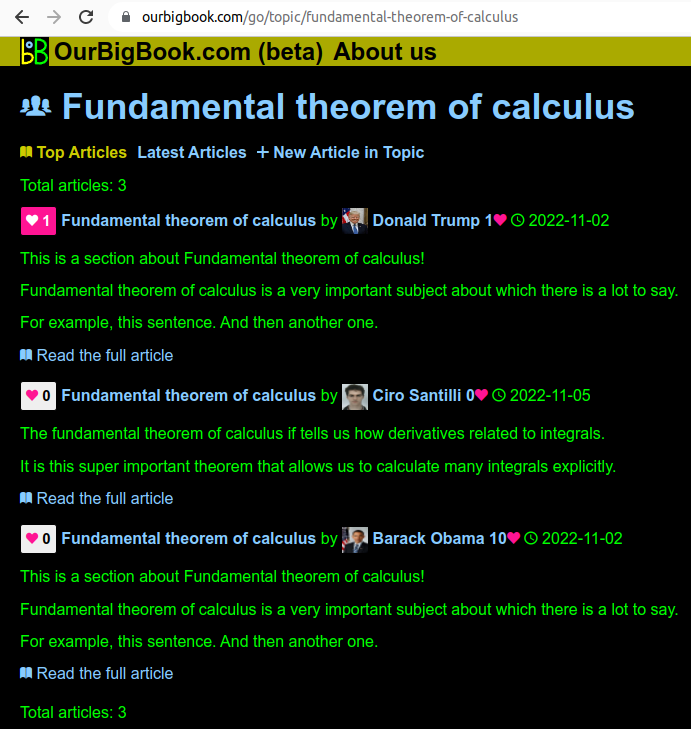Laptop Updated 2025-07-16
2022 Brazilian general election Updated 2025-07-16
Five votes:
All but president are per state. Official list seems to be e.g. for Sao Paulo: divulgacandcontas.tse.jus.br/divulga/#/estados/2022/2040602022/SP/candidatos
Systems programming Updated 2025-07-16
20% time rule Updated 2025-07-16
The Google Story suggests that this practice existed in academia, where it was brought from. But I can't find external references to it easily:
At Google, the preference is for working in small teams of three, with individual employees expected to allot 20 percent of their time to exploring whatever ideas interest them most. The notion of "20 percent time" is borrowed from the academic world, where professors are given one day a week to pursue private interests.
Physics bibliography Updated 2025-07-16
GF(2) Updated 2025-07-16
Hentai Updated 2025-07-16
Quantum statistical mechanics Updated 2025-07-16
Bibliography:
Animal anatomy Updated 2025-07-16
Financial industry Updated 2025-07-16
Long Island Updated 2025-07-16
Lord Kelvin Updated 2025-07-16
Lu Zhishen uproots willow tree Updated 2025-07-16
Money Updated 2025-07-16
Nintendo 64 game Updated 2025-07-16
Organization Updated 2025-07-16
OurBigBook.com University lecture notes Updated 2025-07-16
Basically everything that applies to the blogs section also applies here, but university lecture notes are so important to us that they deserve a bit more talk.
It is arguable that this is currently the best way to learn any university subject, and that it can already be used to learn any subject.
We basically just want to make the process more efficient and enjoyable, by making it easier:
One major problem with lecture notes is that, as the name suggests, they are merely a complement to the lecture, and don't contain enough detail for you to really learn solely from them without watching the lecture.
The only texts that generally teach in enough depth are actual books, which are almost always commercial.
So in a sense, this project can be seen as a path to upgrade free lecture notes into full blown free books, from which you can learn from scratch without any external material.
And a major way in which we believe this can be done is through the reuse of sections of lecture notes by from other universities, which greatly reduces the useless effort of writing things from scratch.
The intended mental picture is clear: the topics feature docs.ourbigbook.com/#ourbigbook-web-topics will is intended to act as the missing horizontal topic integration across lecture notes of specific universities, e.g:
MIT calculus course UCLA calculus course
* Calculus <---> * Calculus
* Limit <---> * Limit
* Limit of a function
* Limit of a series <---> * Limit of a series
* Derivative <---> * Derivative
* L'Hôpital's rule
* Integral <---> * IntegralExample topics page of OurBigBook.com
. One important advantage of lecture notes is that since they are written by the teacher, they should match exactly what "students are supposed to learn to get good grades", which unfortunately is a major motivation for student's learning weather we want it or not.
One big open question for this project is to what extent notes written for lectures at one university will be relevant to the lectures at another university?
Is it possible to write notes in a way that they are naturally reusable?
It is our gut feeling that this is possible. But it almost certainly requires an small intentional effort on the part of authors.
The question then becomes whether the "become famous by getting your content viewed in other universities" factor is strong enough to attract users.
And we believe that it might, it just might be.
settheory.net Updated 2025-07-16
Notably, given the domain name, it is clear that he likes formalization of mathematics-stuff, like Ciro Santilli.
Unlisted articles are being shown, click here to show only listed articles.
